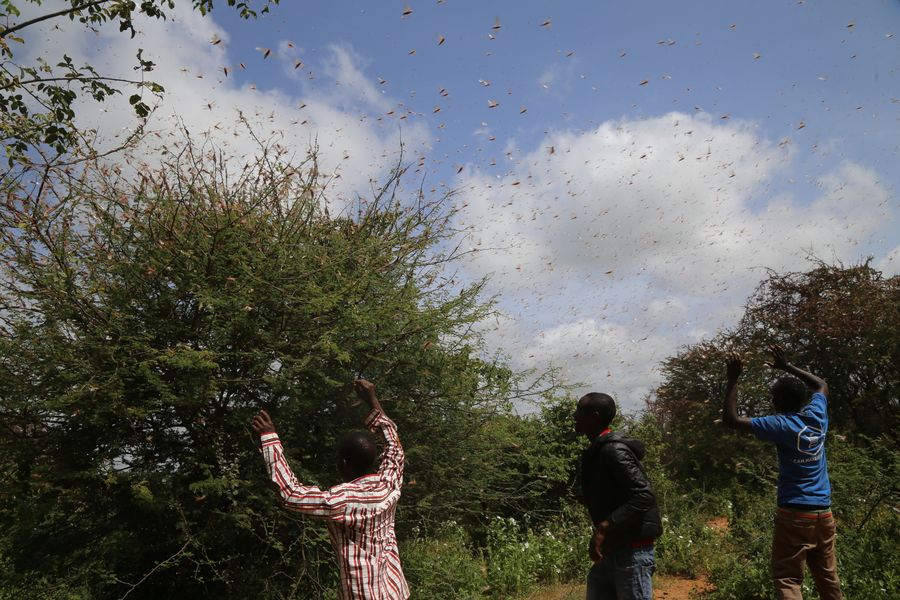
Farmers attempt to scare away locusts from their farms in Mwingi North, Kenya, Jan. 29, 2020. (Xinhua/Fred Mutune)
The United Nations (UN) Secretary General called for intensified international efforts to deal with a locust outbreak that has affected large parts of the African continent.
ADDIS ABABA, Feb. 9 (Xinhua) -- The United Nations (UN) Secretary General Antonio Guterres on Saturday called for intensified international efforts to deal with a locust outbreak that has affected large parts of the African continent.
"The UN has issued an urgent appeal for assistance. I ask the international community to respond with speed and generosity to ensure an effective response and control the infestation while we still have the chance," Guterres said on the sidelines of the 33rd Ordinary Session of the Executive Council of the AU in Ethiopia's capital Addis Ababa.
The UN Food and Agriculture Organization (FAO) on Tuesday disclosed that the Horn of Africa (HoR) region is the worst desert locust affected area from the three hot-spots of threatening locust activity globally.
According to the FAO, the increasing desert locust swarms in Ethiopia and Somalia have continued to migrate into Kenya, where they spread to 14 northern, central and southwest counties, reaching within 200 km of northeast Uganda and southeast South Sudan.

A file photo shows a swarm of locusts fly in Sanaa, Yemen, June 24, 2019. (Xinhua/Mohammed Mohammed)
Guterres said the locust swarms affecting many parts of Africa are unprecedented in size and scope, with climate change playing a big part in aggravating the locust crisis.
"Today locust swarms are as big as major cities and it's getting worse by the day. There is also a link between climate change and the unprecedented locust crisis plaguing Ethiopia and East Africa.
"Warmer seas mean more cyclones generating the perfect breeding ground for locusts," said the UN Secretary General.
The desert locust (Schistocerca gregaria), which is considered as the most dangerous of the nearly one dozen species of locusts, is a major food security peril in desert areas across 20 countries, stretching from west Africa all the way to India, covering nearly 16 million square kilometers, according to the UN. ■



